Why a 5 Acre Homestead is the Perfect Size for a Beginner
Everyone starting out in homesteading asks how much land they need. There’s something sexy about dreaming of larger acreage – believe us, we know! So, we’ll break down why a 5 acre homestead is the PERFECT size for a beginner.
Bigger isn’t always better
More and more people are waking up to the need for greater self-sufficiency in their world… and our shared world for that matter. Homesteading or farming on a small scale is a great way to lessen our footprint and reconnect to our food. This time-honored lifestyle allowed our ancestors and our planet to carry on for millennia without the catastrophic loss of health, happiness, and habitat we’ve seen in the last century.
But when we hear from those considering this old-fashioned shift, we often hear, “I’d love to homestead, but we need at least 10 acres.”
Rewind to early 2020, and those very words might have come directly out of our own mouths. When it came to land, we wanted MORE. So, we focused our search on properties with 10 or more acres and really didn’t give much thought to properties with lesser amounts of land.
Well, ultimately, we ended up on 5 acres. And ya know what… we couldn’t have found a better fit.
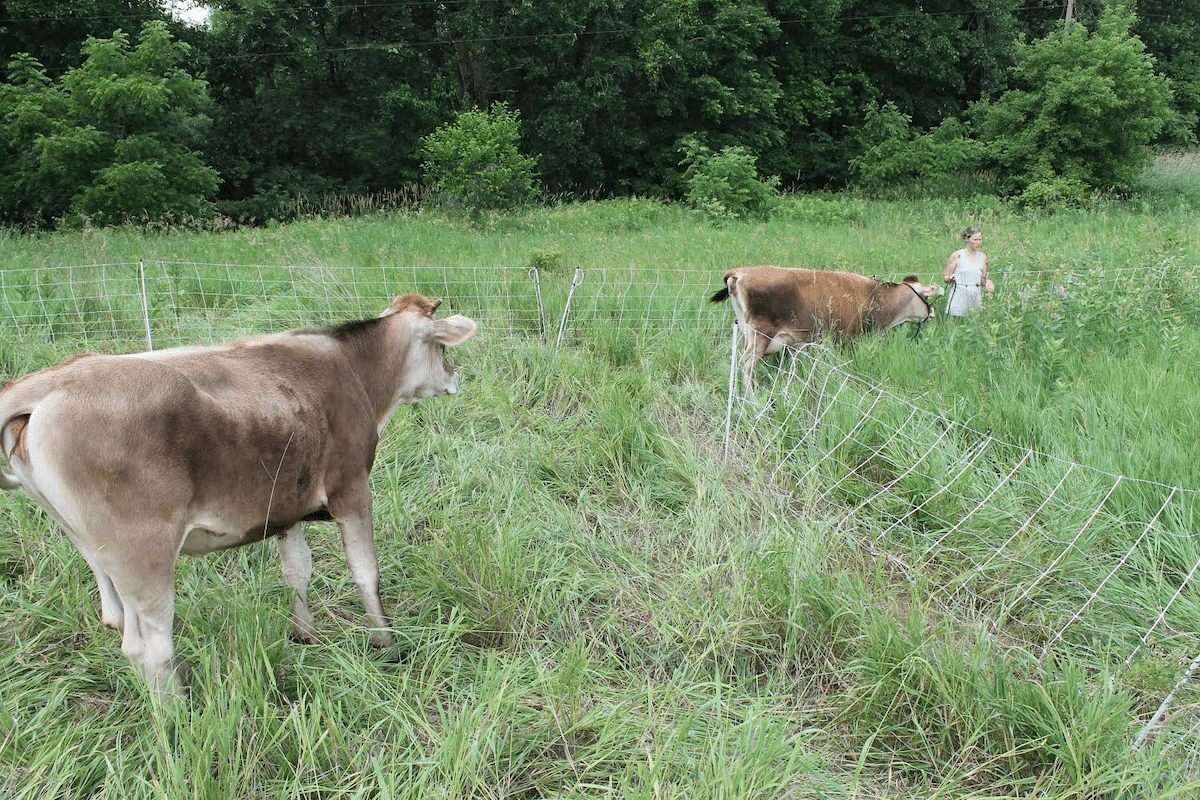
You can read more about that story of how purchasing a homestead on a budget provided so much freedom and flexibility in our world. We initially might have thought that buying only 5 acres to stay out of debt and reduce our cost of living was less than ideal. However, we never would have guessed that 5 acres was actually the absolute right size for our family and our goals.
And it may just be for you too!
What’s magic about 5 acres?
Not a thing. In fact, it’s more helpful to think in the 3ish – 7ish acre range. Staying within that approximate range for a search will allow for a very productive homestead that you can live out most any homesteading dream on – livestock, gardens, orchards, market gardens, permaculture, and specialty crops. You can dabble in it all.
A property below 3 acres may limit what you can produce. Primarily livestock can get challenging to do well on smaller acreage or get expensive with ongoing hay cost.
Ten or more acres can be a tipping point in the opposite direction. Larger equipment. Additional infrastructure. Higher maintenance costs. More land can make it challenging for someone starting out and trying to homestead on a budget to afford.
Don’t get me wrong. Two acres or 10 or more acres may be the perfect size for you and your family’s aspirations. Our goal is to paint a realistic picture of homesteading on 5 acres and what you might run up against if you go above or below that range.

The practicality of a 5-acre homestead
We have found 5 acres to be a very manageable size of land. We can walk to all areas of our property rather quickly. Project costs and infrastructure needs can be kept minimal. Less land just means less you have to spend on – in both money and time.
For instance, if you need some sort of ATV or work vehicle to bring you efficiently around your larger property, that carries a lot of costs. More acres means more fencing, and then more fencing repairs, which is an always recurring theme on every farm. And being able to operate without a tractor or skid steer will save you a whole lot of cost.
In our opinion, 5 acres is about as high as you can go and still operate efficiently on a human scale. We have a 2-wheel, walk-behind, BCS tractor and a riding mower. Beyond that, everything else can easily be accomplished around the farm with hand tools and good old-fashioned elbow grease.

What CAN you do on a 5-acre homestead?
Five acres can fit almost any homesteading hobby or enterprise. This is not by any means exhaustive, but here’s a glimpse of what we have been able to establish on our property in our first two years of homesteading:
Family Milk Cow – We have a Jersey milk cow that we rotationally graze in a regenerative system on roughly 3.5 acres. Her calves are raised for meat. We break down the basics of owning a family milk cow in another post. Managing this system is a significant investment of both time and land, but it provides so much daily food and nourishment, both for our family and for our land. I should mention that we do not produce our own hay and need to bring hay in from another farm each winter.
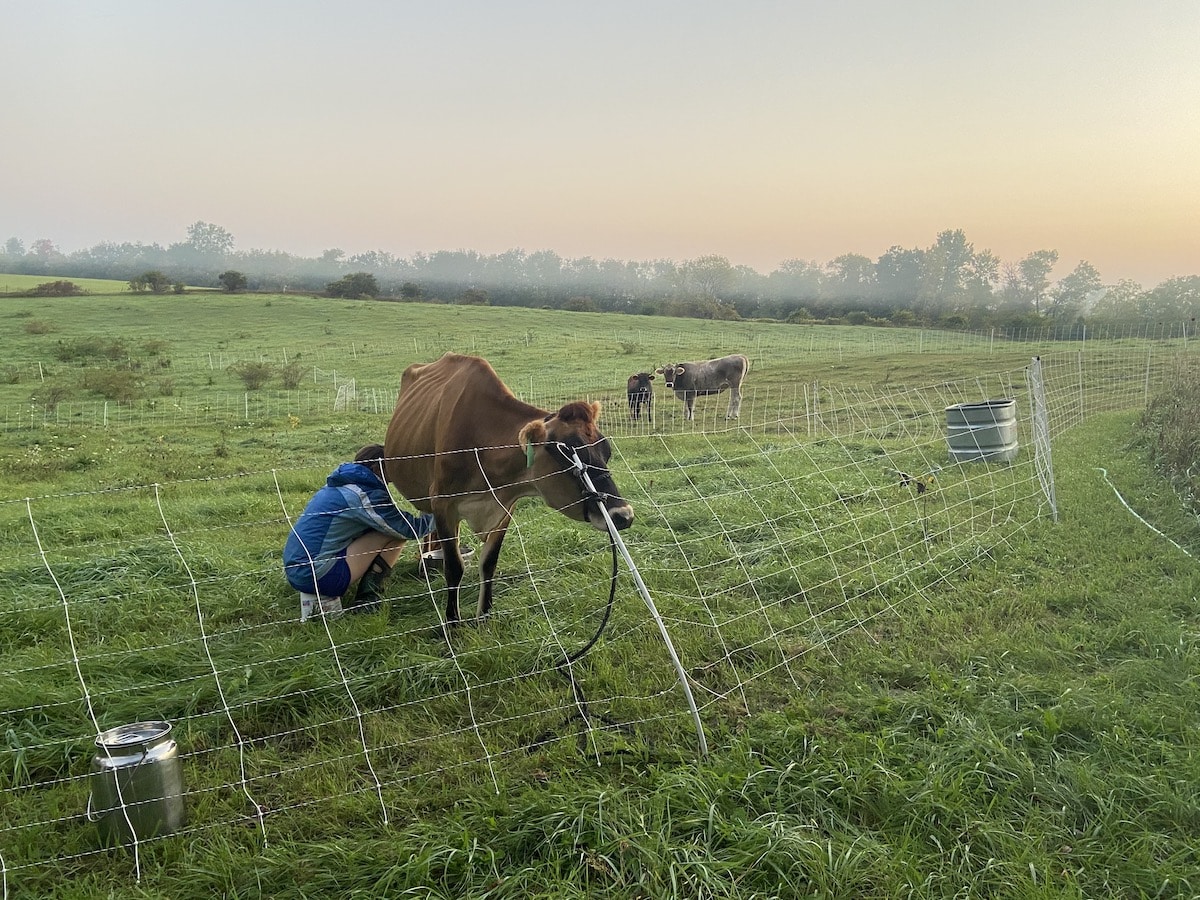
Chickens – Our flock of layers is around 20 hens with capacity to grow. We also raise around 50 broiler meat chickens for our family each year. Learn more about our meat chicken experiences and recommendations.
Pigs – Pigs are a great option for raising on smaller acreage. We installed a pig pen this past year and plan to add pigs to the mix as capacity allows.
Gardens – We have a large vegetable garden where we grow fresh veggies in season for our family. Last year we also started a larger three sisters garden where we grew corn, beans, squash and potatoes. These storage crops have allowed our family to live off what we’ve grown on our farmstead year round.
Orchard – Our first year we planted 26 fruit trees and plan for an additional 10 this year. We also hope to plant some nut trees in our pasture long-term.
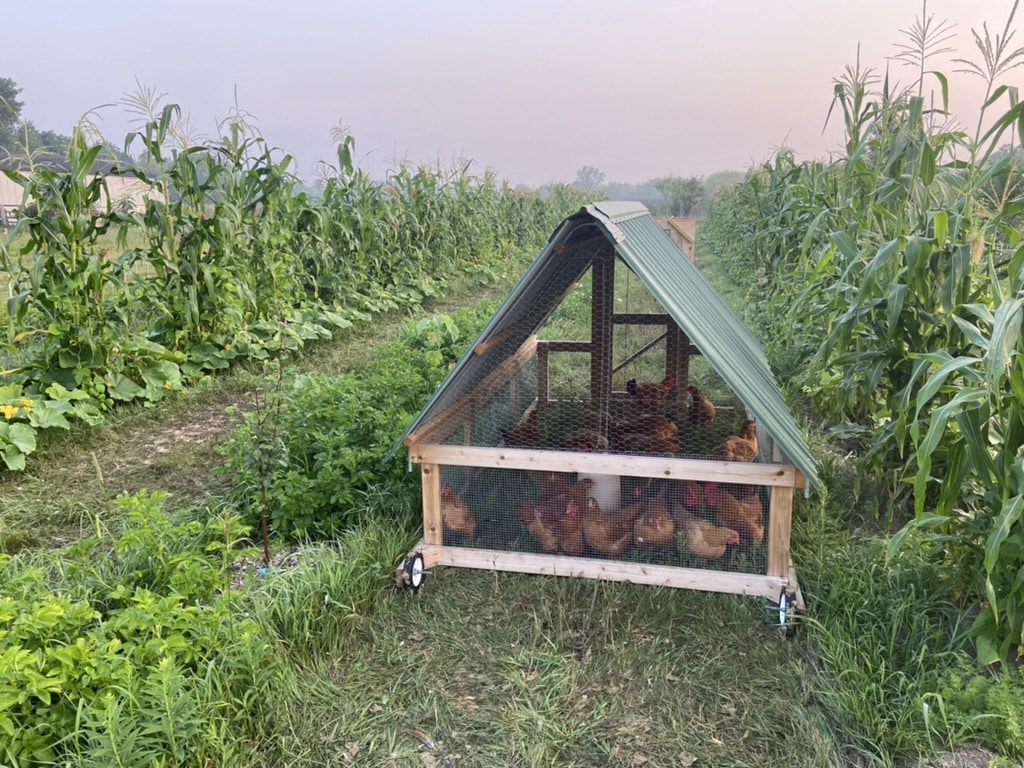
Other Enterprises – The sky is really the limit! Long term we plan to add other smaller ruminants, like sheep or goats, to the mix. We also plan on adding bees this year and have experimented with other things like mushroom growing. Our friends own 5 acres with a full-scale hydroponics operation in a large pole building and a full-scale market garden. Pretty cool stuff.
What CAN’T you do on a 5-acre homestead?
You can certainly produce enough food for your family to consume on 5 acres. If your ambitions are beyond that and you plan to grow food for market, you may find there are limitations.
This might not apply to vegetables. You can grow a lot of vegetables on just a couple acres and have plenty for your family and other markets like CSA’s, co-ops, farmers markets, restaurants, and other wholesale opportunities. Flowers, herbs, and even fruit can fit that category as well.
But growing larger quantities of one thing might mean less space for something else.
If your sights are set on livestock, you’ll want to consider what is feasible. For example, to raise a cow on pasture you typically hear 1 cow per acre, which may still be a little cramped. I’ve also heard 7 sheep per acre and 10 goats per acre. 5 acres can certainly provide food and forage for all these animals. But doing it well and not overstocking your land will take good management and planning.
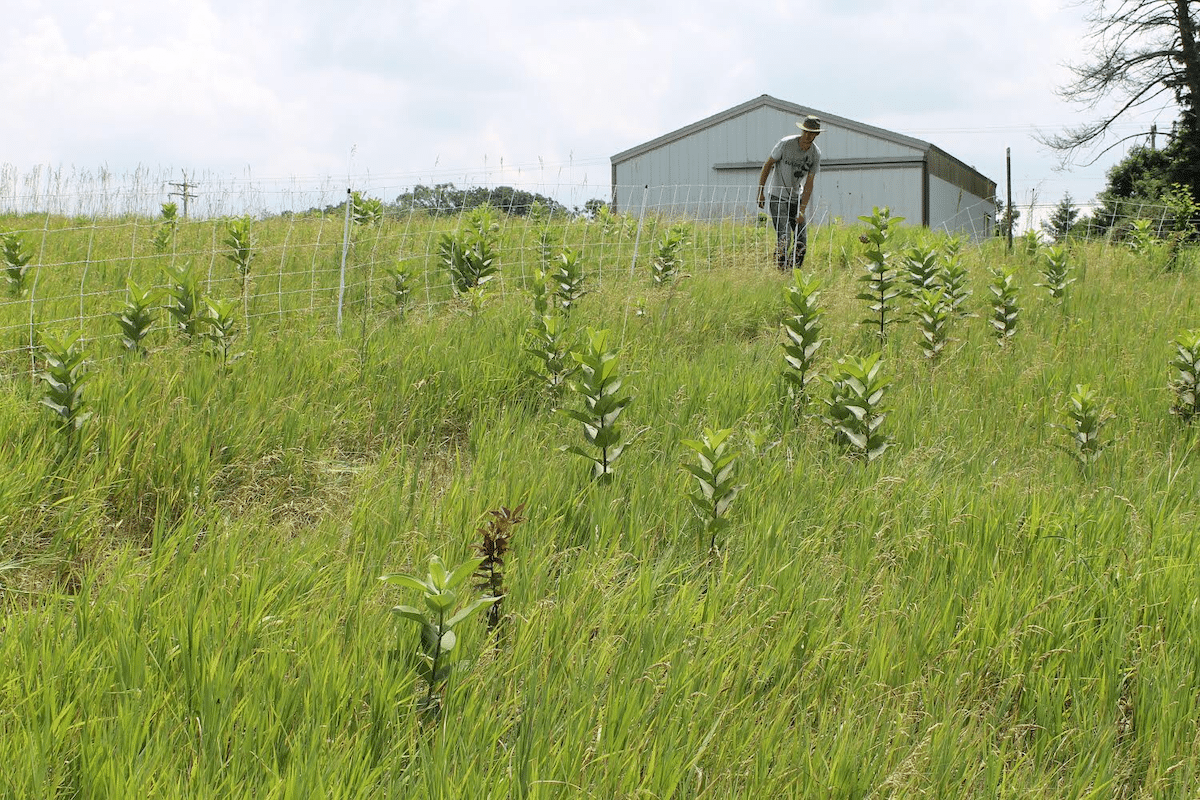
You will also want to do research on your county’s particular ordinances around farm sizes. For instance, in our county you need to be at least 5 acres and zoned Ag to host on-farm events. Other size specifications apply to qualify for certain agritourism uses. These requirements will be unique for each area, so you need to do your homework based on your goals.
Maximize your search for a farm or homestead
You probably have a search set up on Zillow, Realtor, or other similar sites. If you’re new to this whole homesteading and land purchasing thing, don’t limit yourself by excluding properties below 10 acres. You might be missing out on a lot of really great opportunities.
Five acres is a very common property size in rural areas. When a house gets split off from a larger tract of farmland, 5 acres often comes along with it. And when you drive down those rural roads that seem to just be homestead after homestead, many of those properties fall in the 5 acre range.
Many great and affordable homestead and farm properties pop up with 5 or so acres, so make sure you’re including and considering all your options.

You can always expand your land in the future
Be honest with yourself – if you were handed 20 acres today, do you have a plan of how you would utilize all 20 of those acres? If you would have asked us this question while we were searching, I would NOT have had a good answer for you. Twenty acres is a lot of land! Especially for a beginner.
Five acres gives you plenty of room to try new things, develop preferences, and figure out what makes the most sense for your homestead or farm in the long run. And you may very well determine that 5 acres is more than enough to feed your family and meet your needs.
If you do conclude the opposite, tracking down more land opportunities may not be as tricky as you think! There is a growing world of farmland access initiatives. In fact, the majority of farmland across the country is leased by a farmer who does not own the land.
The longer you live in an area the more you’ll get to know neighbors and others in the community who own farmland. So, let’s say you end up wanting to start a dairy operation and needing more pasture – you can probably find someone nearby with the right land and infrastructure that you can lease from. Or if you do want a couple more acres to grow a specialty crop on, there’s likely a landowner near you waiting for that sort of opportunity.
Check your area for a farmlink or landlink website, or a local land trust that can help you track down these sorts of opportunities.
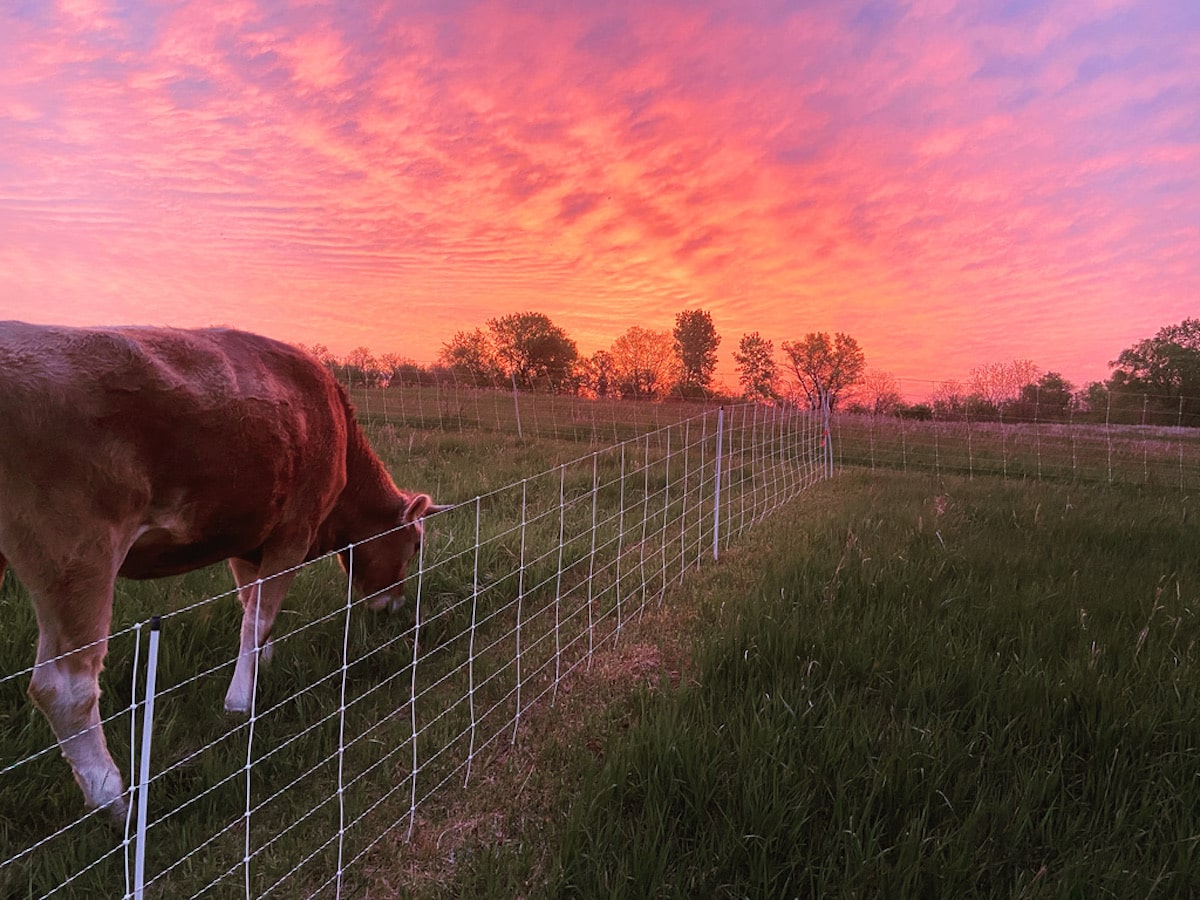
Go forth and homestead!
Regardless of land size, we fully encourage you to go after your homesteading and farming dreams with everything you’ve got! We couldn’t imagine a more fulfilling lifestyle.
We hope this post has given you a bit more clarity on what is achievable on 5 acres, and why it’s worth considering. Obviously, you need to determine what lifestyle and goals are right for your family. But if you’re new to all of it and just not sure what amount of land makes sense to begin with, consider 5 acres.
It may be just the right fit.
Get more homesteading inspiration:
- Buying a Homestead on a Budget
- Farm vs. Homestead vs. Farmstead | What They Are and How to Choose
- Top 10 Resources and Tips for Finding Farmland
- 10 Best Homestead Layout Tips + 5 Acre Example
Pin it for later!
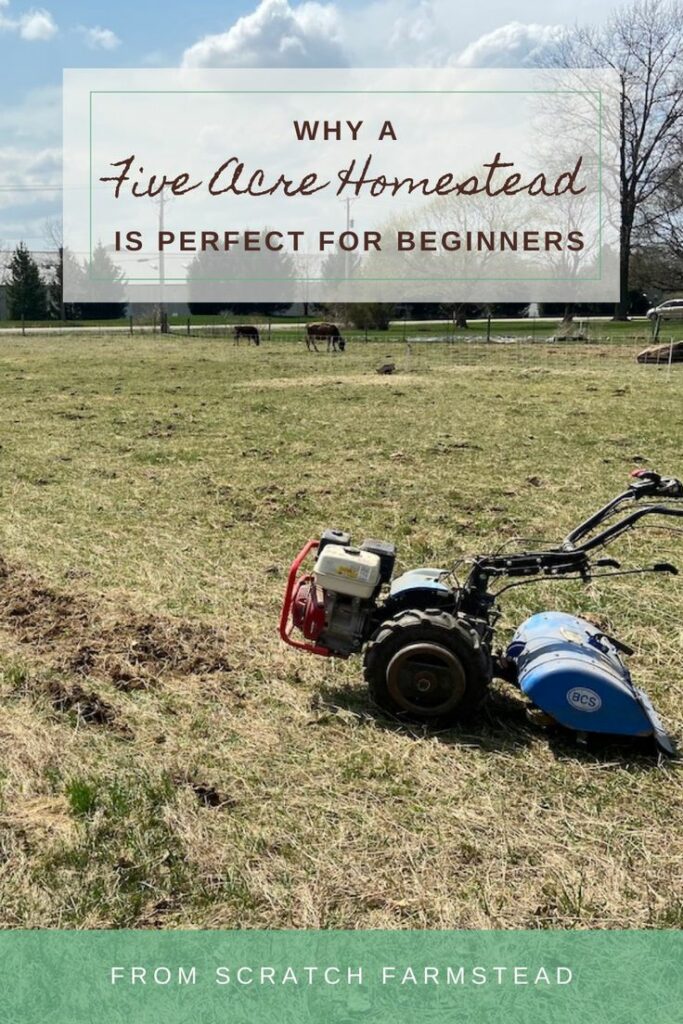
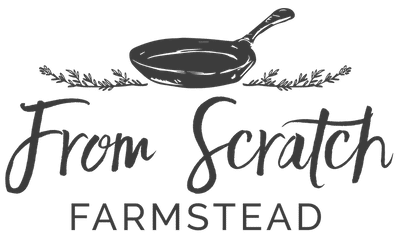

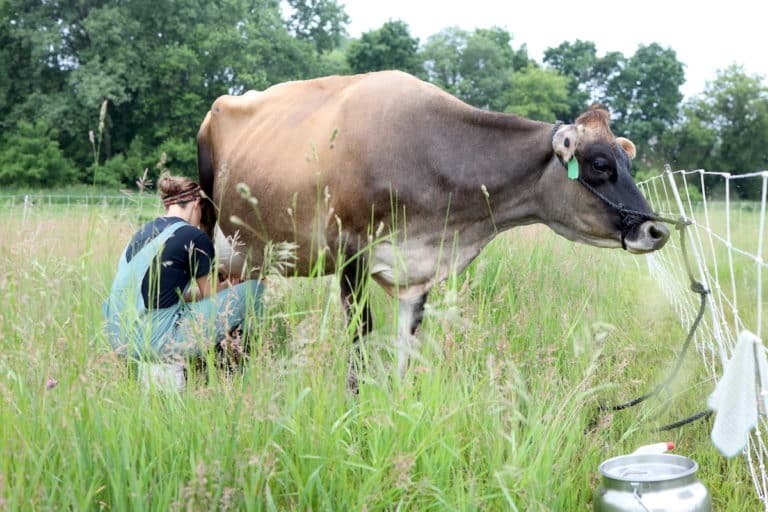
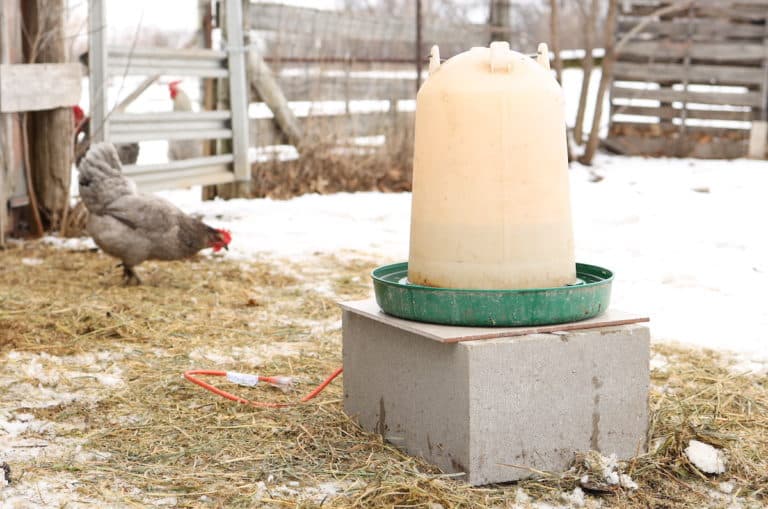



Is this dream still real.. everything is so expensive
Hi Brian, thanks for your comment! And I can’t blame you at all for asking the question. When we bought our property in 2020 it felt like things were high, and real estate has only gone up since then – especially it seems for entry level farm properties. Plus our property was a foreclosure making it more affordable, and foreclosures are just not out there right now. We often say that we might still be looking had we not found the right opportunity at the right time that we did. That said, there have always been ups and downs in real estate. While things are currently high, it can’t stay there forever. And the flip side of the inflated economy is that there’s also more opportunity to earn higher wages than there has been previously. Until recently I worked in farmland access for a couple years. The people that had the most success finding the land opportunities they were seeking were the ones that networked and took the most boots on the ground approach. There are plenty of 5 acre homestead properties out there that will be going up for sale for different reasons – aging owners, moving, etc. And often times those owners would love to see their property go to someone looking to carry on their farming or homesteading legacy. The wider your web of networks go, the better chance you’ll have of catching wind of those opportunities when, or even before, they come up. All that to say I do believe there is still hope! It may cost more right now, but that could change and opportunities will always be there. Best of luck to you!
Hi…really enjoyed the articles…well written, informative and realistic.
I live in Colombia and sell farms to US buyers then help them….love the 5 to 10 acre family farm idea so Im focused on that market.
Again…thx !
Thank you for the kind words and feedback! And that seems like a sweet model you have going on there. I’d be curious to know more of what farming is like in Colombia. Thanks for stopping by and all the best to you!
So helpful. Thank you for sharing! Would you mind providing links for the walk-behind tractor and riding mower you use?
Glad it was helpful! We have a BCS tractor – I believe the BCS 722. I know this is popular place to get them: https://www.earthtools.com. Or, you can also check on places like Facebook Marketplace for used ones… they pop up from time to time. The mower I have is an old Toro Wheel Horse. Nothing special and it’s honestly on its last legs now. I’ve been looking more into compact tractors, like a Kubota. They’re expensive but the time saving potential on certain tasks can be huge. Many have a mower deck, so they can act as your mower but also accommodate implements like a tiller or even a bucket scoop on the front end. I think it’s totally possible to get by without one, and we have for years. But I see the draw more and more for something a little more heavy duty. Hope that helps!